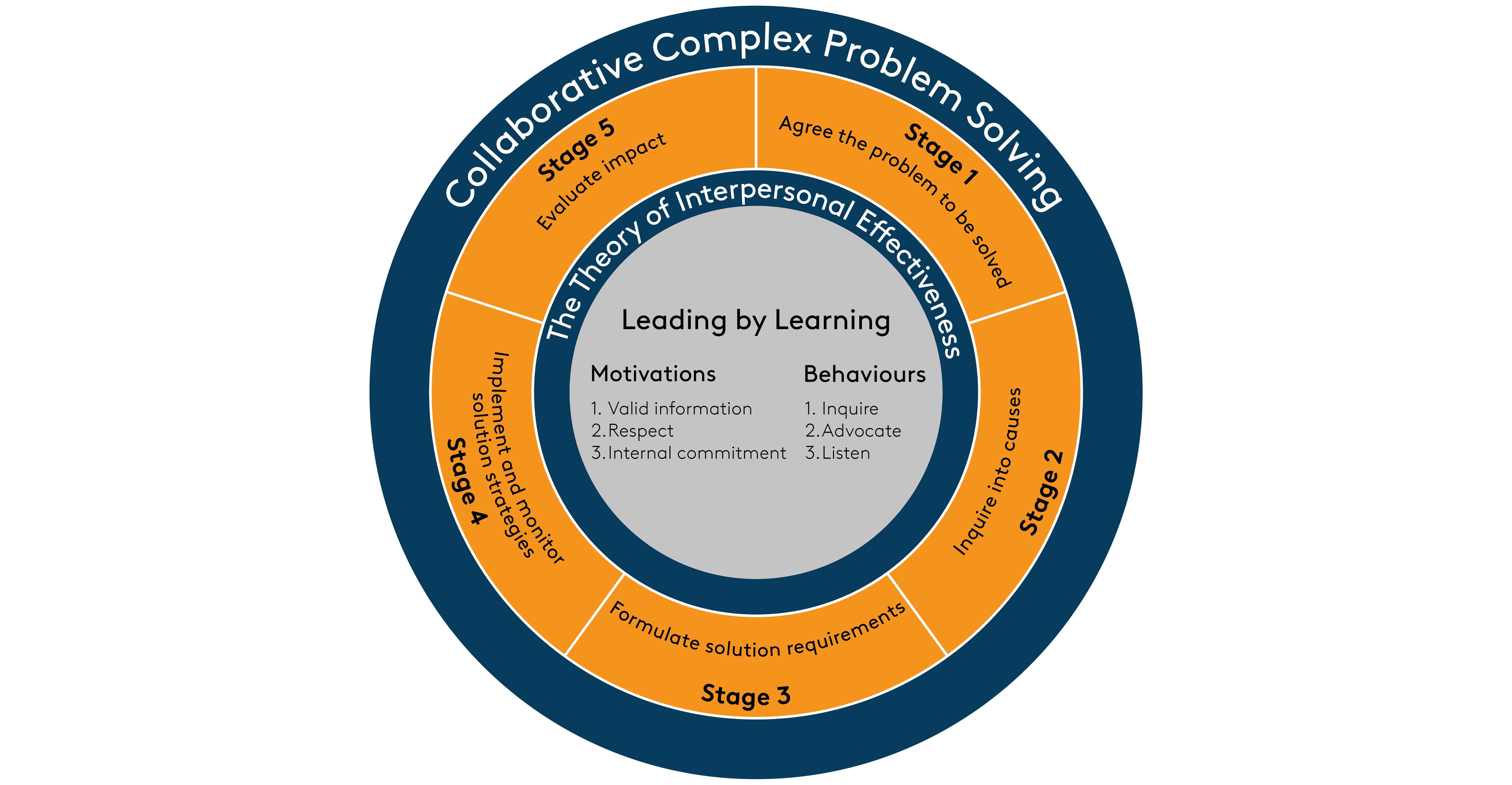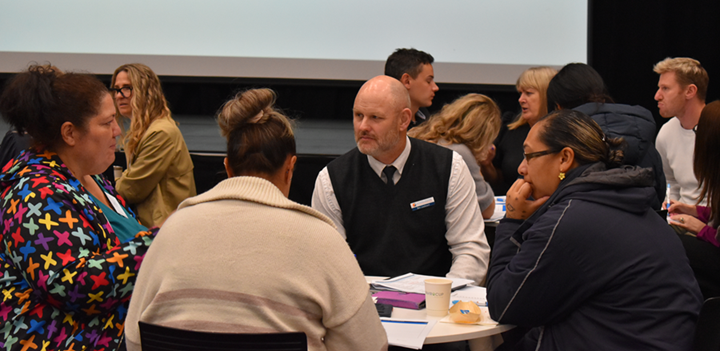Beyond the blueprint: why your problem-solving needs an upgrade
By Ben Laybourn on July 28, 2025 in Leadership
In this blog, Ben unpacks how “theories of action” shape our problem-solving, often invisibly, and why embracing double-loop learning is key to sustainable school improvement. A must-read if you're ready to move from quick fixes to deep, lasting change.
You’ve heard of the Collaborative Complex Problem Solving (CCPS) framework. You understand the stages: problem identification, causal inquiry, solution requirements, implementation, monitoring, and evaluation. It’s a robust blueprint for tackling tough educational challenges.

But sometimes, even with the best framework, progress can feel sticky. You gather data, identify the problem, but when it comes to those crucial conversations about why things are happening or how to change, the air gets thick. People nod, but nothing truly shifts. What’s missing? The secret ingredient often lies in understanding the invisible drivers behind our actions: theories of action.
The hidden hand in problem solving: Theories of action
Research by pioneers like Chris Argyris and Donald Schön, brought vibrantly to life in education by scholars such as Viviane Robinson, Claire Sinnema, and Jacqui Patuawa, reveals a crucial truth: we all operate with "mental maps" or theories-in-use. These are our implicit beliefs and assumptions about how the world works, and they unconsciously govern our behaviour. Often, they don’t match our espoused theories – what we say we believe or intend to do.
We say we value collaboration, but in the moment, we avoid disagreement. We say we want improvement, but we stick with familiar routines. That mismatch is where problem-solving can quietly come undone.
This gap, particularly during problem-solving, is where things can get stuck.
Single loop: the "fix-it" reflex (defensive reasoning). When faced with a complex problem, our default often reverts to single-loop thinking. This is characterised by:
unilateral control: jumping to solutions without deep inquiry
minimising losses/maximising wins: protecting our own ideas, avoiding admitting mistakes, or blaming external factors
suppressing negative feelings: sidestepping difficult truths or conflicts.
This "fix-it" reflex leads to single-loop learning – we correct surface errors but never question the underlying assumptions or behaviours that created the problem in the first place. Imagine a school repeatedly implementing new reading or spelling programmes without ever deeply diagnosing why previous programmes failed, perhaps overlooking a single-loop culture that stifles teacher collaboration or honest feedback.
Double-loop: the "learn-and-solve" mindset (productive reasoning). For truly complex problem solving, we need to activate double-loop thinking. This means:
seeking valid information: openly exploring all data, even if it challenges our initial assumptions
free and informed choice: engaging others in genuine dialogue, where everyone contributes and co-constructs understanding
internal commitment: fostering true buy-in because people feel genuinely heard and part of the solution.
Double-loop learning involves examining and potentially transforming the very assumptions underpinning our approach to the problem. This is where CCPS truly comes alive, enabling teams to delve beneath symptoms to address root causes effectively.

Theories of action: The critical link in CCPS success
When you embed an understanding of theories of action and Leading by Learning at the heart of the Collaborative Complex Problem-Solving process, you unlock its full potential, you shift the whole process from mechanical to meaningful.
1. Deeper problem definition and diagnosis:
Instead of just stating a problem (e.g., "student math scores are low"), a team using a Leading by learning lens would inquire: "what are our theories about why scores are low? Are we operating on assumptions about student capability, teacher skill, or curriculum design that might be untested?"
During diagnosis, leaders and teams become more adept at identifying how their single-loop behaviours might be contributing to the problem. As Patuawa, Sinnema, and Robinson's research shows, effective problem-solving often hinges on leaders' ability to navigate difficult conversations that surface hidden assumptions.
2. Robust solution design:
With CCPS, solutions aren't just "thrown at" the problem. Strategies are co-designed through open conversation. Leaders create conditions where people feel safe to challenge proposed ideas, contribute diverse perspectives, test beliefs, and build commitment. The focus shifts from simply creating a plan to collaboratively designing interventions that address the actual root causes, unconstrained by individual defensiveness.
3. Effective implementation and evaluation:
If solutions are co-constructed with CCPS principles, implementation naturally gains greater internal commitment from the team.
Evaluation becomes a cycle of authentic learning. When things don't go as planned, the team asks: "What were our theories-in-use that led to this outcome? What new assumptions do we need to test?" This promotes continuous double-loop learning.

Leading by Learning: Integrating theory into practice
The power of CCPS truly ignites when paired with the interpersonal skills of Leading by Learning, at the heart of the process. This framework of CCPS, built on the foundations of theories of action, teaches leaders how to engage in deliberate, truth-seeking conversations essential for genuine problem-solving. It's about developing the capacity to inquire into others' reasoning, test one's assumptions, and jointly design actions with commitment and clarity.
As Robinson, Sinnema, and Le Fevre emphasise, this is about moving "from persuasion to learning" in our interactions. This critical shift enables teams to genuinely leverage the power of CCPS, transforming potential friction points into opportunities for profound, systemic improvement.
Ready to solve with impact?
Complex problems require more than just a framework; they necessitate a shift in mindset and approach to conversation. By understanding and actively transforming your theories of action, you can unlock the full potential of Collaborative Complex Problem Solving and drive real, lasting change in your school.
Next time your team faces a challenge, ask: are we simply fixing, or are we truly solving by learning together? Let's lead by learning together.
Want to build this capability in your team?
Explore our Leading by Learning and CCPS workshops to develop the interpersonal skills and inquiry habits that power deeper improvement.
Key references:
Patuawa, J., Sinnema, C., Robinson, V., & Zhu, T. (2023). Leadership professional learning for accelerating student achievement: the role of a collaborative problem-solving intervention. Professional Development in Education.
Robinson, V., Sinnema, C., & Le Fevre, D. (2014). From persuasion to learning: An intervention to improve leaders' response to disagreement. Leadership and Policy in Schools, 13(2), 173-196.
Sinnema, C. (2017). Capturing the complex, situated and active nature of teaching through inquiry-oriented standards for teaching. Journal of Teacher Education, 68(1), 101-112.
Other articles you might like
In the blog, Ben discovers how middle leaders used deliberate conversations and evidence-based inquiry to transform student achievement in reading.
Quick fixes aren’t enough. Learn how Collaborative Complex Problem Solving helps schools tackle real challenges and achieve sustainable improvement.
As leaders, you’ve likely been considering curriculum implementation in recent years. The start of 2025 marks the official rollout of English and Te Reo Rangatira in Years 0-6 and mathematics and Pāngarau in Years 0-8, with draft consultation for the senior years to follow later in the year.
